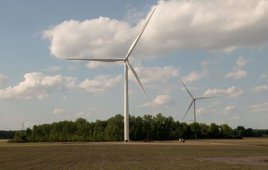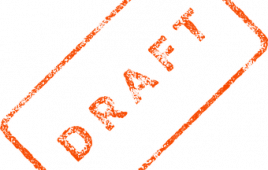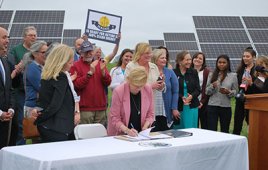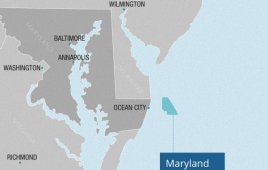The wind industry has devised several ways to get a closer look at wind blades and towers. A technician might rappel out of the nacelle and slowly lower himself while giving the wind blade an inspection. Ground-mounted lifts carry technicians up on a platform. A rope-hoisted work platform or blade-access platform also helps. This latter device is based on modular components so it can assemble into one of four platforms as the job demands, says Clint Ramberg, Spider’s Director of Wind Access.

One design provides four different configurations that have custom functions for work on wind blades and towers.
The platform breaks down and easily transports on a 16-ft utility trailer that meets DOT requirements for non-CDL transport. When partially preassembled offsite, it take about an hour to set up and rig onsite. After that, it takes slightly less time, 30 to 60 minutes, to move onto the second tower.
To set up, a worker in the nacelle secures haul lines to anchor points and drop them to the ground. The haul lines then pull up heavier suspension rope. Those connect to the anchor points. From there, technicians reeve the motor and lift the platforms.
A minimum of two lines are used, one for each side of the platform. Ramberg says that is enough to keep the platform stable along with the stabilization frame, which produces a third point of contact. A standard wind project has a minimum of three locations to keep it balanced. The platform has a low center of gravity. This, combined with the angle of the ropes and the pressure of the sub-frame against the tower, keeps the platform stable. All hoists and ropes stay on the outside of the platform and provide a clear path around it.
Manufacturer Spider says the modular 360° blade-access platform easily configures to one of four different wind blade or tower platforms with minor changes to components. “The same components in the 360° platform can reconfigure to make a smaller but single point blade-access platform, or a slightly larger two-point tower-access platform.“
“For new users, the platform requires a few days of training and tech support. An instructor will stay there as long as that person is needed,” Ramberg says. OSHA requires that sites using power-suspended scaffolding also have a competent person on site. The company also offers competent-person training. It’s up to the company using the equipment to select that person.
The role has strict requirements, but Ramberg says Spider training is a knowledge-based course that helps employers ensure their competent person on site has all of the product-specific and company compliance training they need. The competent person completes the general jobsite requirements of inspecting the platform and rigging, evaluating the jobsite conditions and insuring proper use of the platform, and he must have authority and ability to eliminate or control an unsafe situation or to stop the work.
The company began manufacturing suspended scaffolding in the late 1940s. As the wind market began to develop and mature, Ramberg says the company recognized the need for a custom platform for the wind industry. The company rigged its first wind turbine in 1980 in a research project with Boeing, which was exploring the possibilities of wind power. The company’s equipment has been used on turbines for three decades, with the 360° platform the latest. WPE
Filed Under: Blades, Safety, Uncategorized





Hello,
This is Boo from Korea. I am working in 3MW windfarm and we are considering purchasing BAP. This BAP also can be used for offshore turbines? How much the cost to purchase all of equipment with BAP?
I am looking forward to your reply.
Thank you!
Best Regards,
Boo